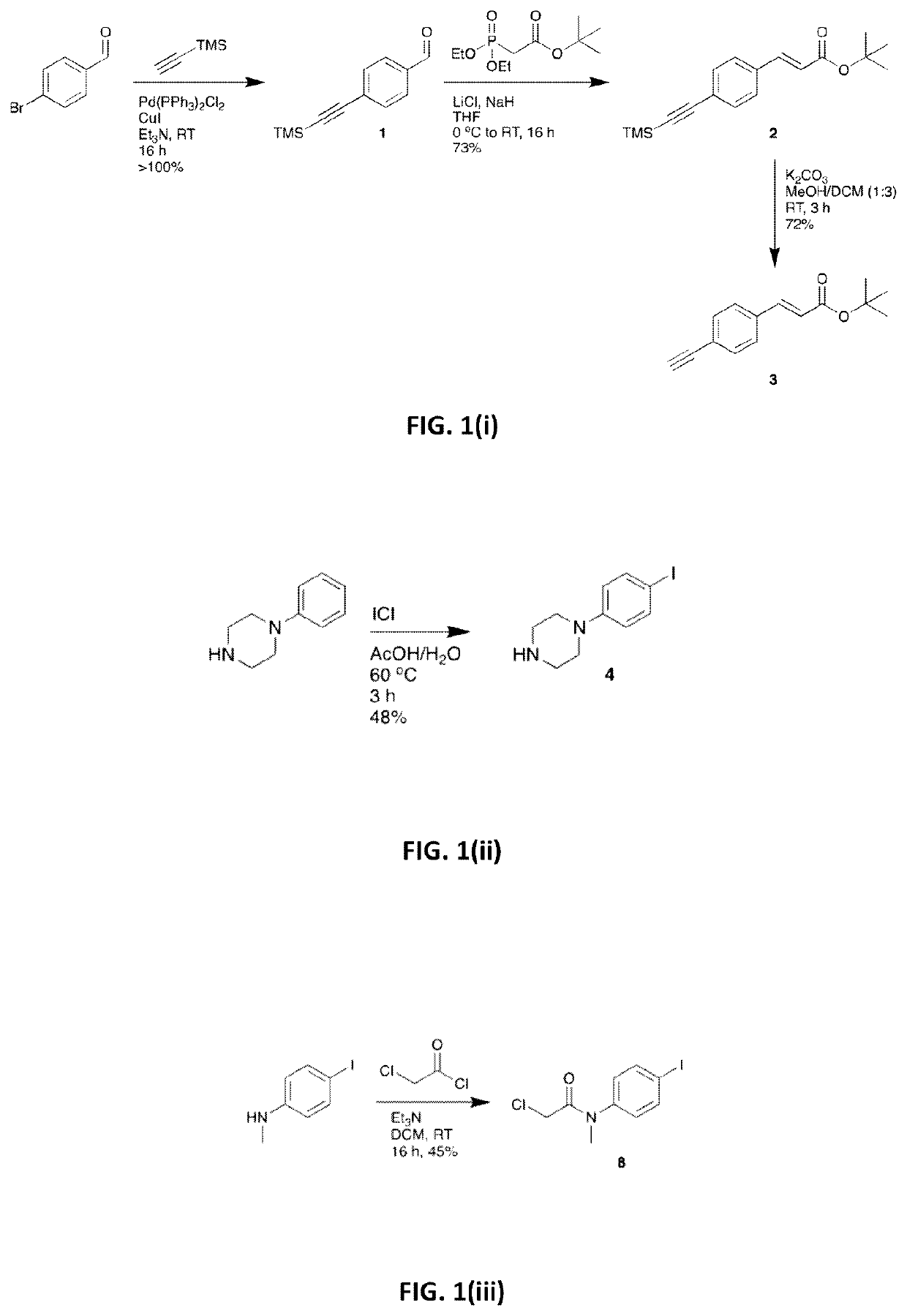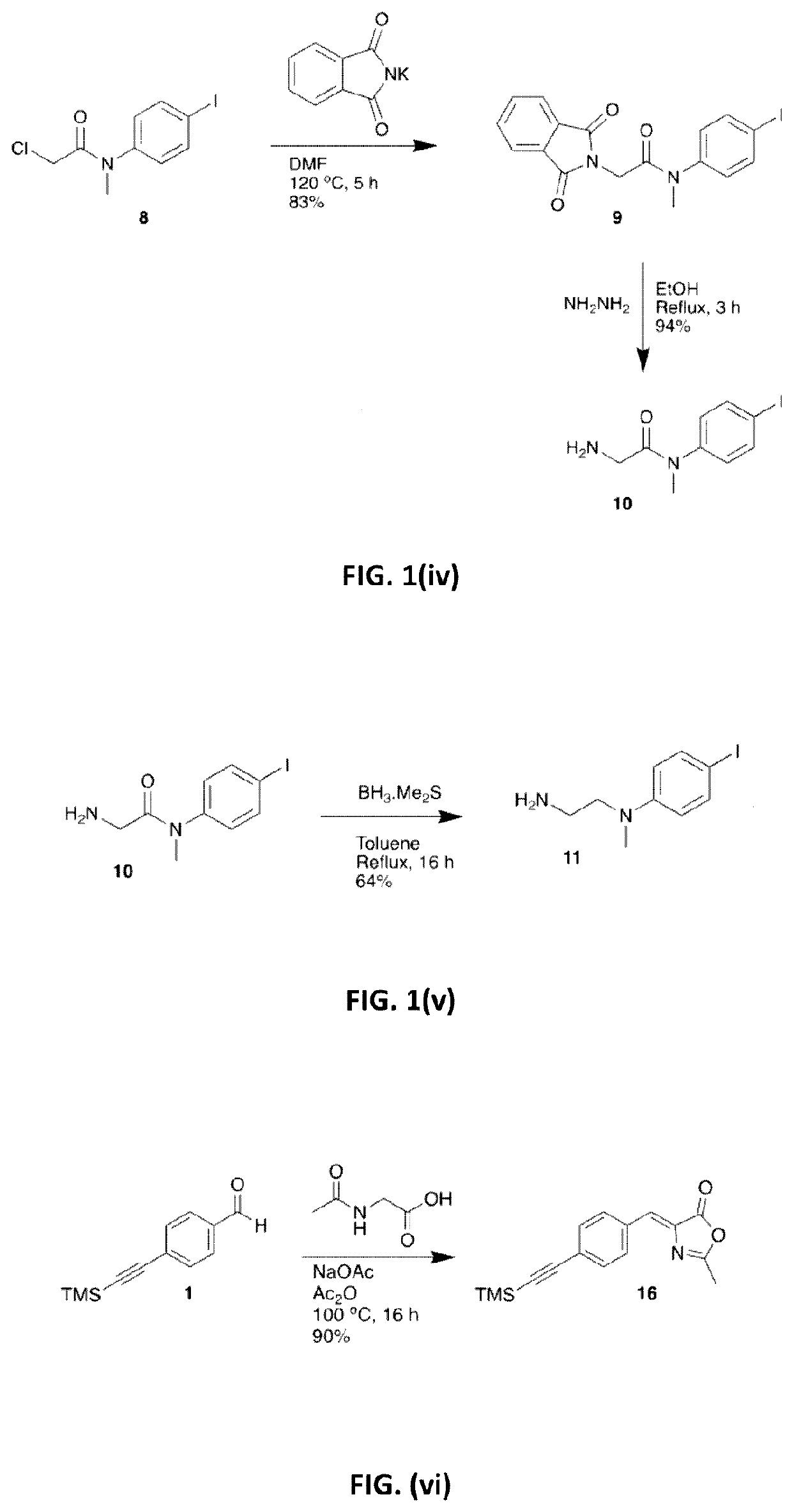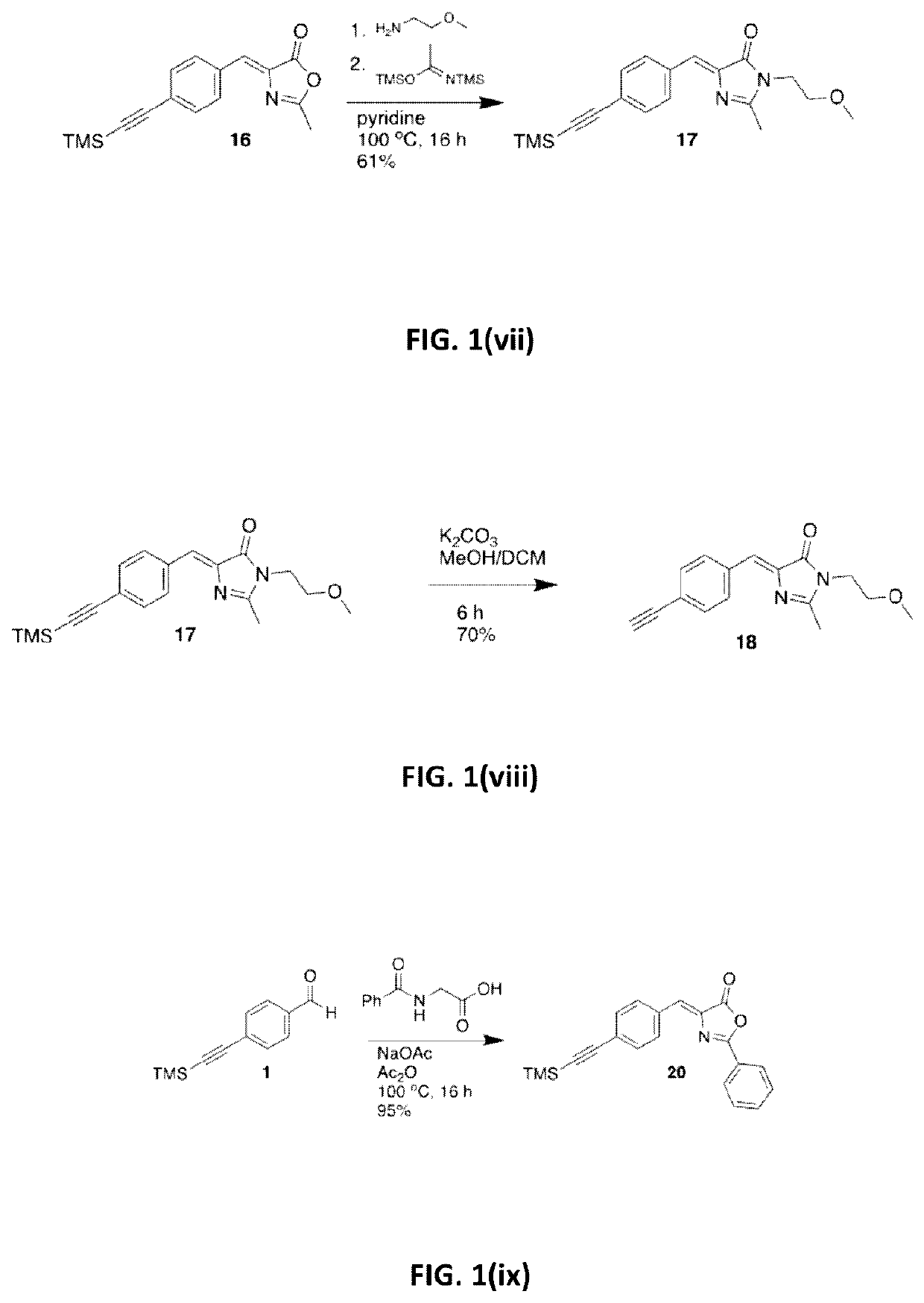Fluorescent systems for biological imaging and uses thereof
a biological imaging and fluorescent system technology, applied in the field of fluorescence compounds, can solve the problems of difficult development of reliable markers for non-mammalian cell types, limited use of fluorescent probes and therapeutics, and poor signal quality and specificity
- Summary
- Abstract
- Description
- Claims
- Application Information
AI Technical Summary
Benefits of technology
Problems solved by technology
Method used
Image
Examples
example 1
OF EXEMPLARY COMPOUNDS OF FORMULA I
1.1 Synthesis of Coupling Partners
1.1.1. Synthesis of tert-butyl (2E)-3-(4-ethynylphenyl)prop-2-enoate, 3
[0153]The synthesis of tert-butyl (2E)-3-(4-ethynylphenyl)prop-2-enoate (3) is illustrated in FIG. 1(i). Triethylamine (Et3N) (250 mL) was degassed by sparging with Ar for 1 hour. 4-Bromobenzaldehyde (18.5 g, 100.0 mmol), Pd(PPh3)2Cl2 (1.4 g, 2.00 mmol), Cul (0.38 g, 2.00 mmol) and trimethylsilylacetylene (15.2 mL, 110.0 mmol) were then added under Ar and the resultant suspension was stirred at room temperature (RT) for 16 hours (h). The suspension was diluted with heptane, passed through a short Celite / SiO2 plug and the extracts were evaporated to give a crude dark solid (24 g). This was purified by Kugelrohr distillation (130-150° C., 9.0 Torr) to give compound 1 as an off-white solid (21.5 g, >100%), which was carried to the next step without further purification. Tert-butyl diethylphosphonoacetate (14.4 mL, 61.5 mmol) and LiCl (2.54 g, 60.0 ...
example 2
NT OF ABSORPTION AND FLUORESCENCE EMISSION OF EXEMPLIFIED COMPOUNDS
[0228]Peak absorption and fluorescence emission wavelengths of compounds 6, 7, 12, 13, 14, 15, 19, 23, 27, 30 and 34 were measured in a variety of solvents, and the results are shown in Table 1. Absorption measurements were recorded at a concentration of 10 μM, and emission measurements were recorded at a concentration of 100 nM. Emission spectra were recorded with excitation at the peak of absorption (S0→S1).
TABLE 1Peak absorption and emission wavelengths of compounds 6, 7, 12, 13, 14, 15, 19, 23, 27, 30 and 34 in a variety of solvents.CompoundSolventλabs(max) / nmλem(max) / nm6Toluene358482DCM3685507Toluene361504DCM36256312Toluene380482DCM37155113Toluene358464DCM36154714Toluene367506DCM36153115Toluene381473DCM37754519Toluene403515Chloroform403584MeOH395—23Chloroform42461627Toluene380493DCM37152430Chloroform37453534Chloroform432628
example 3
ICAL COMPARISON OF PARA-SUBSTITUTED AND ORTHO-SUBSTITUTED COMPOUNDS
[0229]To compare the photophysical behaviour of para-substituted compounds of the invention with ortho-substituted compounds, compound 73 and reference compound 77 were synthesised in accordance with Example 1:
[0230]Solutions of compounds 73 and 77 were prepared at concentrations of 10 μM and 100 nM in chloroform. The absorption spectra of each compound (10 μM) was recorded using a CARY100 UV-Visible spectrometer, from 200-800 nm, and is shown in FIG. 3a after solvent background subtraction. FIG. 3a illustrates the substantial hypsochromic shift and reduction in extinction coefficient as a result of moving the donor moiety from the para-position in 73 to the ortho-position of 77. Also shown in FIG. 3a is the approximate bandwidth of a 405 nm violet excitation laser light source that is commonplace on fluorescence microscopes used for cellular imaging studies. Compound 73 is capable of efficient excitation by this lig...
PUM
 Login to View More
Login to View More Abstract
Description
Claims
Application Information
 Login to View More
Login to View More - R&D
- Intellectual Property
- Life Sciences
- Materials
- Tech Scout
- Unparalleled Data Quality
- Higher Quality Content
- 60% Fewer Hallucinations
Browse by: Latest US Patents, China's latest patents, Technical Efficacy Thesaurus, Application Domain, Technology Topic, Popular Technical Reports.
© 2025 PatSnap. All rights reserved.Legal|Privacy policy|Modern Slavery Act Transparency Statement|Sitemap|About US| Contact US: help@patsnap.com



